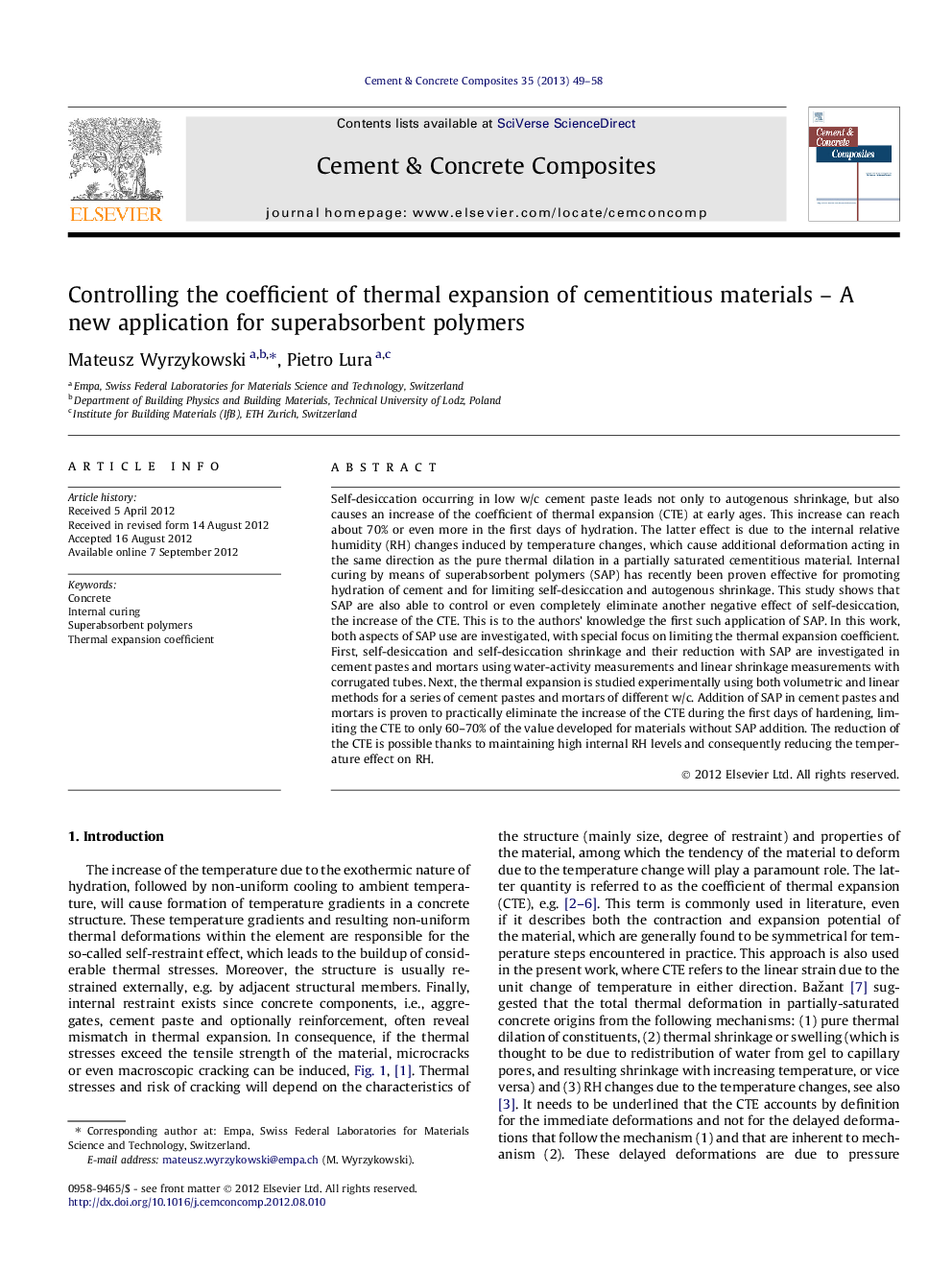| Article ID | Journal | Published Year | Pages | File Type |
|---|---|---|---|---|
| 1454929 | Cement and Concrete Composites | 2013 | 10 Pages |
Self-desiccation occurring in low w/c cement paste leads not only to autogenous shrinkage, but also causes an increase of the coefficient of thermal expansion (CTE) at early ages. This increase can reach about 70% or even more in the first days of hydration. The latter effect is due to the internal relative humidity (RH) changes induced by temperature changes, which cause additional deformation acting in the same direction as the pure thermal dilation in a partially saturated cementitious material. Internal curing by means of superabsorbent polymers (SAP) has recently been proven effective for promoting hydration of cement and for limiting self-desiccation and autogenous shrinkage. This study shows that SAP are also able to control or even completely eliminate another negative effect of self-desiccation, the increase of the CTE. This is to the authors’ knowledge the first such application of SAP. In this work, both aspects of SAP use are investigated, with special focus on limiting the thermal expansion coefficient. First, self-desiccation and self-desiccation shrinkage and their reduction with SAP are investigated in cement pastes and mortars using water-activity measurements and linear shrinkage measurements with corrugated tubes. Next, the thermal expansion is studied experimentally using both volumetric and linear methods for a series of cement pastes and mortars of different w/c. Addition of SAP in cement pastes and mortars is proven to practically eliminate the increase of the CTE during the first days of hardening, limiting the CTE to only 60–70% of the value developed for materials without SAP addition. The reduction of the CTE is possible thanks to maintaining high internal RH levels and consequently reducing the temperature effect on RH.
